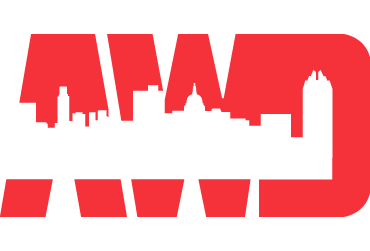AKA: How we Got to be # 1!
SEO really takes some effort, but it can be done.
There's no real secret to it - just consistent, diligent activity.
Step 1: Determine your target terms.
These are the keyword groups you most want to come up in search for. For us, it's "Austin web design."
There's a free tool you can use to find out what terms get the most traffic.
Go here: Google's Free Keyword Planner
You'll need a free Google AdWords account to use it. If your term doesn't get searched often enough to have good search data, try removing the location (omit "Austin"). Using this tool, select 1-5 key phrases you want to come up in search for. Consider selecting terms that are less competitive, unless your field is not that competitive. Landscapers and lawyers might want to find niche terms, whereas used forklift suppliers should go after the highest volume relevant terms because they're in a less competitive field. Balance high volume terms with the likelihood that your target searcher is using that term.
Step 2: On-Site Optimization
(Step 2 and 3 can be done simultaneously)
Once you know what terms you want to come up for, use them on your website in a natural way.
Also, have lots of content. Write blog posts, product reviews, portfolio posts, whatever it takes. Google really likes a lot of content. Don't stuff in your keywords. Google will punish you for that. Just use them as often as you naturally can.
Pro Tip: If you find yourself writing a lengthy how-to e-mail to a client, turn it into a blog post. Where do you think this post got its start?
Make sure your page titles use your key terms. Ditto your image alt tags and page URLs. If you need help editing those, let us know.
Pro Tip: Want to go the extra mile? Use key-word rich image file names and appropriately geotagged images. While you're at it, get an SSL certificate.
Google does really like fresh content. You should see newly created content shoot to the top, and then gradually lose its rank over the course of months and years.
Another big on-site factor is page load speed. Every website we build, we speed optimize. However, there's no replacement for a good host. We use WP Engine and they shave about a second off our load time. They're $30/month though. Money well spent.
Pro tip: Keep your website secure and loading fast with regular maintenance. We offer that service. Check out our website maintenance plans.
Step 3: Off-Site Optimization
Google likes a website with all the appropriate ancillary business pages and profiles to exist and match, so make sure you have Google Business, Yelp, Facebook Business Page, Twitter, etc and make sure your hours, contact info, and URL are all listed correctly therein.
Google likes a website with a thriving social media presence, so post at least a couple times a week to your various profiles. I have mine configured to echo whatever we put on Facebook business onto our LinkedIn and Twitter pages, and we're adding Pinterest.
Posting videos to youtube and then linking back to your website is also a good strategy. Google loves videos.
Pro Tip: Keeping up with developments in SEO is more than a full time job. Don't get distracted with the latest way to make a 1% improvement. Google actually doesn't like websites to be overoptimized anyway.
Google loves to see quality backlinks (links from other websites to yours). Quality means, ideally, the website you are linking from is aligned with your industry and geography. Short of that, if you can at least get a backlink with a few appropriate keywords around it, or better yet, have the key term link to your website, that's useful. Contact ancillary businesses and other companies you partner with and see if you can guest-post a blog article or something.


